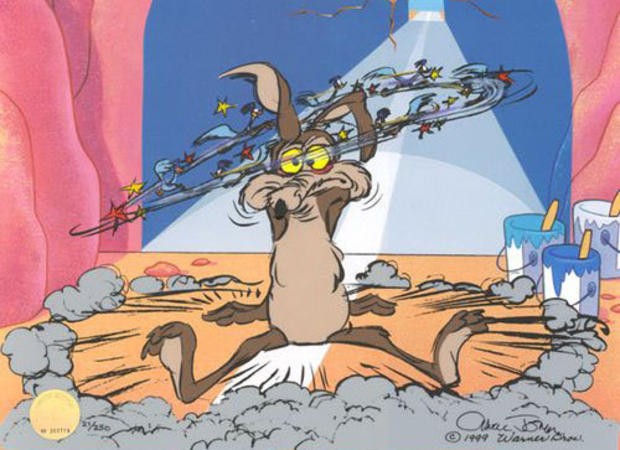Wile E. Coyote inspires new way to diagnose concussions
NEW YORK -- Dirk Kaufman, 51, was riding his bike last March when he was hit by a car. He wound up in the emergency room at Bellevue hospital.
"What the hell happened?" wondered Kaufman when he first woke up.
What happened was a concussion with memory loss and confusion. In Kaufman's case the injury did not show up on a CT scan. But less obvious cases of concussion are harder to diagnose, says neurosurgeon doctor Uzma Samadani.
"Concussions actually have 43 different definitions and that's part of the problem is that nobody knows how to define it and therefore nobody knows how to diagnose it or count the incidence of it," said Samadani.
Samadani and her team at NYU's Cohen Veterans Center are developing a way to diagnose concussion by measuring how the eyes track a moving image, in this case an animated movie clip. 97 percent of healthy people move their eyes together at a very predictable rate.
Thursday's study found emergency room patients with symptoms of concussion had problems with eye tracking, even when their CT scans showed no evidence of brain injury. The study also found the more severe the symptoms, the more abnormal the tracking.
Cartoonists have known that for years. In their animations, when a character is bonked on the head, their eyes go every which way.
"Wile E. Coyote is a classic example," said Samadani. "He gets hit on the head, has abnormal eye movements. That's how you diagnosed concussion in the 1950s when Wile E. Coyote was created."
Injured athletes can downplay symptoms in order to keep playing.
"I think it's really important that there's an objective measure," said Samadani. "You can't fake whether or not your eyes can move together. If someone has a brain injury you're going to be able to detect it."
Fortunately Kaufman's eye tracking returned to normal in about two weeks. Dr. Samadani has submitted patents for this experimental technology and is part owner of a company that holds the license.



